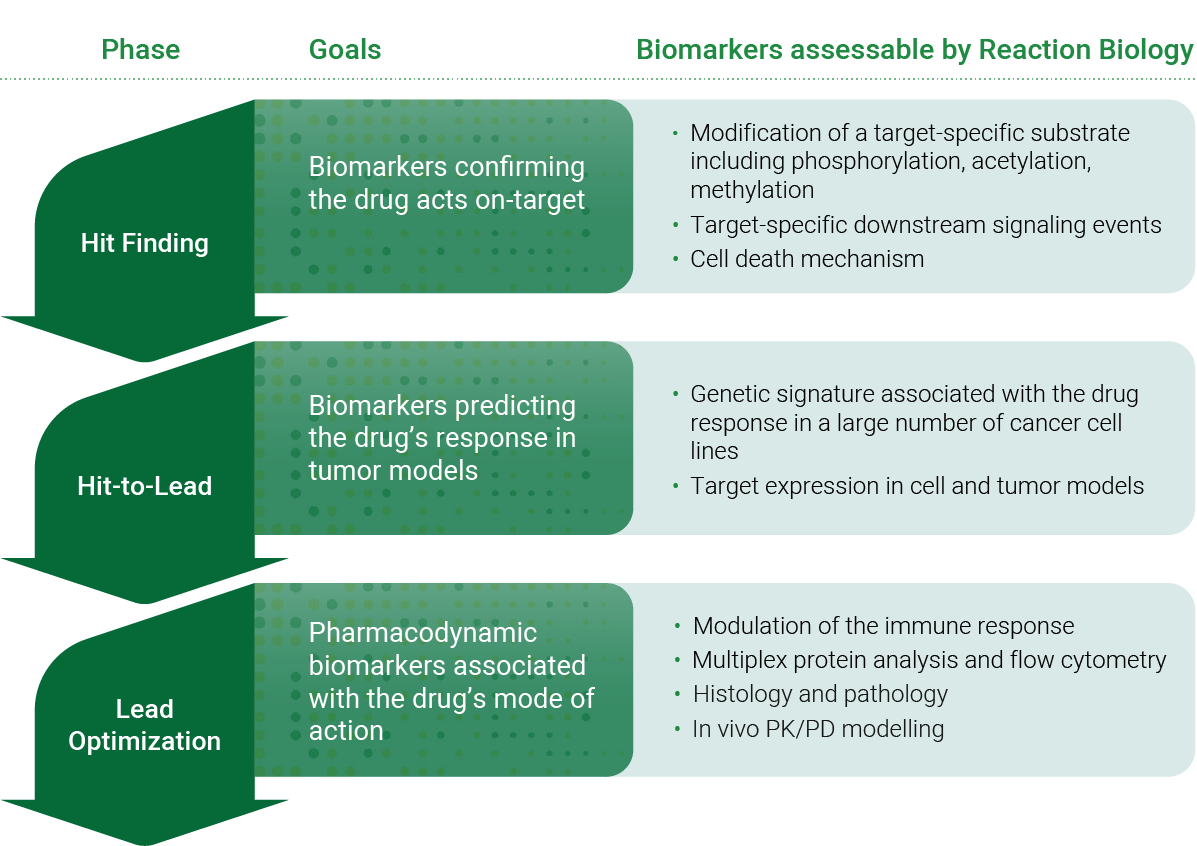Biomarker Identification and Screening
Biomarker identification and screening are crucial for successful drug discovery and development. During the early phases of drug discovery, biomarkers are needed that confirm the drug’s action on the target, also known as pharmacodynamic biomarkers. Similarly, when entering the phase of phenotypic cellular screening, scientists need to understand which tumor cell lines will respond to the drug and why. The knowledge of predictive and pharmacodynamic biomarkers plays a crucial role in selecting suitable tumor models, data interpretation, and determining drug doses and treatment regimens. Identifying biomarkers will support the clinical phase of drug development with patient stratification and monitoring of drug effects in the patients.

